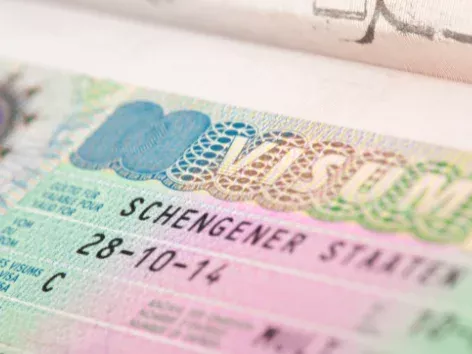The EU is discussing the end of temporary protection for Ukrainians: will the program be extended for another year?

Europe is discussing strategies for winding down temporary protection for Ukrainians after 2026. Find out what changes refugees can expect and what to consider now
The European Union is actively discussing the future of temporary protection for Ukrainian citizens who were forced to leave the country due to russia's full-scale invasion. According to the European publication Euractiv, Brussels is considering a so-called “exit strategy” from the current protection program, which was introduced in March 2022 in accordance with the EU Temporary Protection Directive (TPD).
The current validity of this directive is until March 2026. However, according to sources in diplomatic circles, in June 2025, the EU member states will have to decide on its future. And it is likely that the extension for another year until 2027 will be the last.
Why might temporary protection not be extended?
The TPD Directive was activated in the face of an unprecedented humanitarian crisis to quickly provide Ukrainians with protection without the need to go through a lengthy refugee procedure. As originally conceived, the directive provided for protection for up to one year with the possibility of two extensions - up to a maximum of three years. That is, until March 2025.
However, the European Commission has already gone beyond the original framework, extending protection until March 2026. Now they are discussing another “final” year.
"We are already on thin ice with the latest extension. A straightforward interpretation of the directive would mean that after three years it would lose its validity," explained Martin Wagner, Senior Policy Advisor at the International Center for Migration Policy Development.
He also emphasized the need to develop clear alternatives for both those Ukrainians who want to stay in the EU and those who plan to return to Ukraine.
Don't want to miss important updates and useful articles? Subscribe to our weekly newsletter!
What options does the EU offer: what happens after temporary protection?
Despite the general support among member states for another extension, legal constraints are forcing the EU to look for new approaches. Among the proposed options:
● Narrowing the scope of protection. This means excluding persons who have already returned to Ukraine from the possibility of re-using protection.
● Closing the program for newcomers. This means that persons arriving after a certain date will not be able to use the temporary protection mechanism.
Creating a new legal instrument. For example, a “reconstruction permit” - a special status that will allow Ukrainians to stay in the EU for up to 10 years based on the long-term consequences of the war and the need to rebuild the country.
Read more about the abolition of temporary protection, ways of legalization for Ukrainians in the EU, and existing risks in an interview with Anna Fedoryshyna, migration lawyer at Visit Ukraine, here.
Despite active discussions, no final decision has yet been made at the EU level. At the same time, experts warn that in the absence of a clear plan for the withdrawal of protection, national asylum systems may be overwhelmed.
What does this mean for Ukrainians in the EU?
The current situation requires Ukrainians to closely monitor changes in EU legislation and prepare for possible future options. If temporary protection is not extended after 2027, Ukrainians will either have to:
● apply for refugee status
● apply for residency on the basis of work, study or family ties
● return to Ukraine.
Tip: If you plan to stay in Europe legally after your temporary protection expires, consult with migration specialists now. Visit Ukraine lawyers advise on the rules of border crossing, paperwork in the EU, legalization of residence abroad, and other migration issues. Turning to professionals will help you avoid mistakes in the process of legalization, submission of documents or change of residence status.
We remind you! The Czech government is considering the possibility of terminating temporary protection for Ukrainian refugees in the event of a long-term ceasefire in Ukraine. Interior Minister Vit Rakusan announced plans to tighten the asylum procedure and introduce new approaches to the reception of war veterans. Read how this may affect Ukrainians in the Czech Republic in our previous article.
Want to know more? Read the latest news and useful materials about Ukraine and the world in the News section.
Our recommendation for a safe and comfortable trip:
Visit Ukraine Insurance - insurance for a safe stay abroad without unnecessary expenses;
Green Card - compulsory car insurance for traveling abroad;
Visit Ukraine Tickets - book tickets for buses, trains, and airplanes to/from Ukraine and between cities around the world;
Private Lawyer service - professional legal support on visa and migration issues;
Visit Ukraine Merch - buy patriotic clothing and accessories with worldwide delivery.
© 2018-2025, Visit Ukraine. Use, copying or reprinting of materials on this site is permitted only with a link (hyperlink for online publications) to Visit Ukraine.
All rights reserved.
Recommended articles
2 min
VU lawyers explain
Temporary protection for Ukrainians in the EU has been extended until 2026, but can we be sure? Are changes, restrictions, and even deportations possible? Find out the answers to the hottest questions about the status, risks and scenarios for the future in an interview with Anna Fedoryshyna, migration lawyer at Visit Ukraine
08 apr. 2025
More details1 min
For refugees
France improves temporary protection for Ukrainians: details of the new bill
The French government has passed an important bill that expands the rights of Ukrainians under temporary protection. From now on, Ukrainian doctors will be able to work more easily in their specialty, vulnerable categories of the population will have access to social assistance, and the status of temporary residence itself will acquire new opportunities. Find out what changes await Ukrainians in France in 2025
19 mag. 2025
More details2 min
For refugees
Germany is preparing to toughen its migration policy based on the model of Denmark. Find out how this may affect Ukrainian refugees, the asylum system and the labor market
26 mag. 2025
More details1 min
Travel
Which Schengen countries have introduced border controls: restrictions in 2025
In 2025, Schengen countries continue to face challenges that require the restoration of border controls. These measures are aimed at improving security and managing migration flows. Find out which countries have restrictions in place
26 mag. 2025
More details
